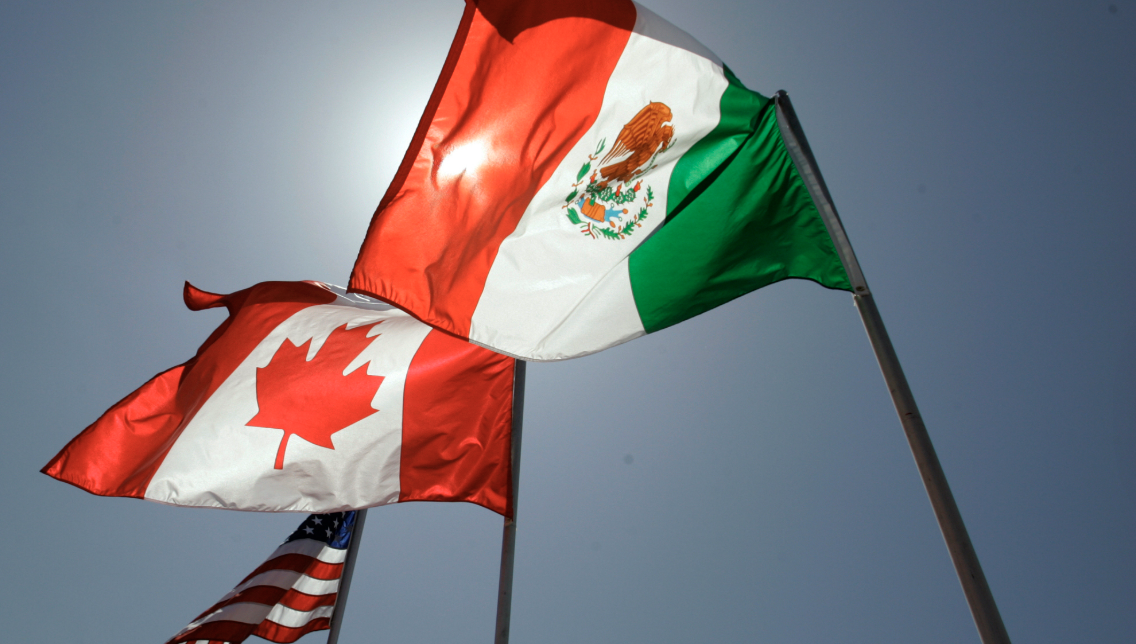Canada and Mexico have wasted no time in firing back at Donald Trump’s latest trade war salvo, slapping 25% tariffs on US imports in a move that is set to shake up global supply chains. What began as another Trumpian flex on economic nationalism has now escalated into a full-blown trade standoff, potentially sending shockwaves through global markets.
Canadian Prime Minister Justin Trudeau unveiled a retaliatory package of tariffs on CA$155 billion (US$106 billion) worth of American goods. At the same time, Mexican President Claudia Sheinbaum pledged “corresponding countermeasures” against Trump’s 10% tax on Chinese imports—though she stopped short of immediately announcing new tariffs. The implications are clear: what started as an America-first strategy may well become an America-alone economic nightmare.
If that weren’t enough, Trump has also hinted that Europe could be his next target. The prospect of a tariff battle between the world’s largest economies is already giving corporate leaders and investors sleepless nights. Rising import costs will squeeze company profits, disrupt global trade flows, and fuel inflationary pressures—exactly the kind of economic headwinds that could force central banks to rethink their rate-cutting plans.
In true Trump fashion, the White House framed this as a necessary measure to “protect American interests,” invoking the International Emergency Economic Powers Act—a relic from the 1970s that allows the president to wield sweeping tariff authority under the guise of a national emergency. Trump had previously dangled this legislative grenade over Mexico’s head in 2019 but never pulled the pin. This time, the explosion is real.
Economic forecasts paint a grim picture. According to Bloomberg Economics, Trump’s tariffs could push the US average tariff rate to 10.7%, triggering a 1.2% contraction in US GDP and pushing core inflation up by 0.7%. And that’s before counting the retaliation from trading partners.
China, for now, is opting for diplomacy—Beijing has signalled its intent to challenge the tariffs through the World Trade Organization rather than escalating the conflict. But as history has shown, it’s only a matter of time before patience runs out.
Trump, of course, remains undeterred. His tariffs are ostensibly aimed at punishing trade partners for what he deems to be lax enforcement on illegal migration and drug smuggling. Yet, they will primarily punish American consumers, who now see higher prices on essential goods like food, housing, and fuel. Even US energy imports from Canada, including oil and electricity, will be taxed at a lower rate of 10% to prevent an outright surge in gas prices.
Major US industries are already in panic mode. Automakers such as General Motors, Ford, and Stellantis, whose supply chains are deeply integrated across North America, face potentially devastating cost increases. The US retail sector, meanwhile, is nervously eyeing Trump’s move to scrap the “de minimis” exemption, which allowed small-value imports to enter tariff-free. This could be a crushing blow for e-commerce businesses reliant on cheap imports, especially from China.
The most concerning aspect of Trump’s latest move is its self-reinforcing structure. The executive orders include built-in mechanisms to increase tariffs further if retaliatory measures are enacted—which, of course, they already have been. This sets the stage for a spiralling conflict, where tit-for-tat tariffs keep escalating, driving up costs and stifling trade.
Mexico has dismissed Trump’s accusations that it is failing to combat drug cartels, with Sheinbaum countering that the US should focus on reducing domestic drug demand rather than blaming its neighbours. Meanwhile, Trudeau invoked the long-standing military and economic ties between the US and Canada, subtly reminding Washington that the two nations have “fought and died together” in wars.
And yet, despite these appeals for cooperation, the fact remains: Trump’s trade policies operate on aggression, not negotiation.
Trump’s second term is already proving to be an exercise in testing the limits of presidential power, with his tariffs expanding the use of emergency economic measures far beyond their original intent. The White House insists these actions are temporary and conditional on Canada and Mexico addressing Trump’s concerns. But if history is any guide, “temporary” economic measures can stick around much longer than intended.
Businesses, workers, and consumers will be the biggest losers in this escalating tariff war—not just in North America but globally. As trade tensions rise, inflationary pressures will intensify, central banks may delay rate cuts, and global growth could take a significant hit.
The world is watching. The only question is how much damage will be done before someone hits the brakes.
